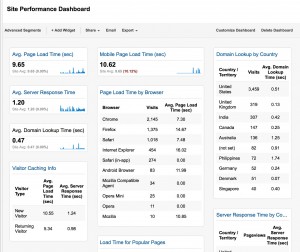Recently I had the pleasure of going through Google’s certification process for AdWords. I passed. However, it wasn’t the easiest thing in the world to do. It’s not that the material is hard to grasp or that the test itself is difficult. No, the main problem I found with the AdWords certification process is sifting through the seemingly endless amount of information in the study guides and figuring out what Google really wants you to know. I spent the better part of three weeks reading through the study guides that Google provides, reading books on AdWords, and using a paid online resource for question banks and mock exams to prepare for both the fundamentals exam and the advanced search exam. The truth is I could probably have done it in half the time if I knew some of the things I know now. I want to now share with you some of the insights I gained while going through this process in the hopes it may be able to help you become certified quicker and more efficiently.
Skim through the Google Study Guides
If I had tried to pass the exams just by reading the study guides, I am almost positive that I would have failed. It’s true that ALL of the information you need to pass the test lay within these study guides. However, they are mind numbingly boring and very hard to decipher what the big take-aways are from each entry. I read these word for word, sometimes literally falling asleep at my computer, and when I was done I struggled to look back on what I read and say what it was that I actually learned and retained.
If I were to do it over again, I would skim through each section and try to pull out the main ideas (which I said is already hard) if I can. But I definitely wouldn’t read it word for word. To take notes, I wrote down things in a spiral notebook and took screen shots of things in the study guides for reference later. I suggest doing something along these lines. Oh, and you will probably read lots of other people out there telling you to not only read every word but to watch every video too. Don’t bother. Everything covered in the videos are covered in the text, and most of it is useless.
Don’t buy any AdWords books… yet.
I bought a copy of Perry Marshall’s Ultimate Guide to Google AdWords and spent a few days reading that cover to cover. While it is a great book for someone starting out in AdWords and contains some great advice, books like these aren’t going to help you pass the exam. In fact, they are just going to serve as a distraction to you if your main goal is to get certified as quickly as possible. Hold off on buying a book like this until after your certification.
Pony up for iPass Exam (and jump right in!)
iPass Exam is the paid resource I used to study. While the English is a little off at times, some questions are extremely poorly worded, and you have to pay for it, the service does a pretty good job of delivering exactly what you need to know for the exam. In fact, I am fairly certain that if I had just jumped in and started studying off of this, I could have passed the exams just as easily as I did with all the extra studying I did. Make sure you are good about writing down the answer to every question you get wrong. Then go back and test yourself on it again. If you are passing the practice exams on iPass you are probably ready for the real test.
The real test is not as hard as the practice tests you may be taking
I was getting low 80%’s on my practice tests. I got 96% on both the fundamentals exam and the advanced search exam (no big deal). In the real test, there are a lot of questions addressing the same topics, and the questions are worded so you can VERY easily eliminate two or three answers from each question. Overall, the test really isn’t that hard.
With all that said, keep in mind you still need to put some time in to study. If you don’t pass the first time, you’ll have to wait 7 days before you can take the exam again so just put in the study time the first time. Take plenty of notes from questions you miss off of practice exams and question banks and utilize the screen shot to capture pictures of tables and guidelines that Google provides off the study guides. Overall, don’t stress. It’s way more manageable than the study guides make the test out to be.
Photo Credit: albertogp123 cc




















